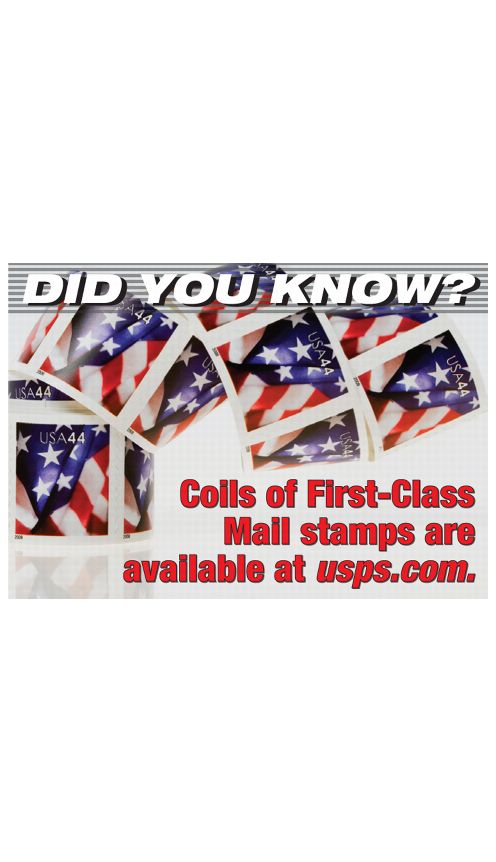For your convenience, we have reprinted a service talk on the Intelligent Mail® barcode as well as a copy of a poster that illustrates how to handle undeliverable-as-addressed (UAA) mail with an Intelligent Mail barcode.
The Intelligent Mail barcode for letters and flats is an evolution of USPS® barcode technology. Its design uses four different “states” of bars: full, ascender, descender, and tracker. It has more overall data capacity than the traditional “two-state” short and tall bars for POSTNET™ and PLANET Code® barcodes.

The Intelligent Mail barcode contains:
n A Barcode ID, which identifies pre-sort information, if needed.
n A Service Type Identifier, which identifies the class of mail, service requests, and endorsements.
n A Mailer Identifier (MID), which uniquely identifies the mailpiece owner/sender.
n A Serial or Sequence Number, which uniquely identifies the mailpiece to facilitate tracking in transit and may identify the addressee to the mailer.
n The Delivery Point ZIP Code used for sorting and routing the mail.

The POSTNET barcode contains:
n The Delivery Point (routing ZIP Code).
The Intelligent Mail barcode includes data that allows for single or multiple product or service requests. It can uniquely identify up to a billion mailpieces in a single mailing and allows for improved barcode read rates on automated equipment.
Mailer services currently available for letters and flats through the Intelligent Mail barcode include Full Service Automation Discounts & Benefits; OneCode Confirm™ Mailer subscription, which allows mailers to track their mail; and Full Service and OneCode Address Change Service (ACS), which satisfies Move Update requirements.
The Intelligent Mail barcode data must be available on each mailpiece for processing from acceptance to delivery, including mail that has been identified as UAA.
When UAA mail is sent to the Postal Automated Redirection System (PARS) or Computerized Forwarding System (CFS) to be processed, the Intelligent Mail barcode is necessary to provide electronic address correction or Nixie information to the mailer. Marking through or covering the barcode prevents PARS and CFS from providing that information electronically.
A common misconception is that UAA mail, also commonly referred to as Return to Sender (RTS) mail, is also loop mail*. This is not true. Loop mail is defined as “mail sent to an incorrect destination as a result of a wrong barcode and/or wrong ZIP Code”. UAA mail is defined as “mail that can not be delivered as addressed”. There are two types of UAA mail:
1. Change-of-address (COA)–related mail is UAA either because the customer has moved and filed a change of address request with USPS, or the delivery employee filed a “Moved, Left No Address” or “Box Closed, No Order” COA request.
2. Nixie-related mail is UAA for reasons other than a COA on file, such as “No Such Number”, “Attempted Not Known”, or “Refused”.
Mail that is UAA due to either a COA or Nixie reason and has an Intelligent Mail barcode or ACS indicators (#B) in the address block must be processed through PARS or CFS. The barcode, #B information, and original name and address must always be available for processing.
Never mark through, obliterate, or cover the Intelligent Mail barcode, “#B” ACS indicators, or original name and address information on UAA mail.
*See Management Instruction PO-420-2008-1, Loop Mail Program, for loop mail procedures, as needed.
— Address Management,
Intelligent Mail and Address Quality, 1-28-10


